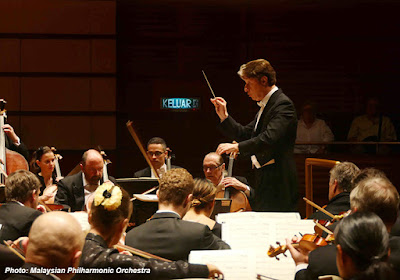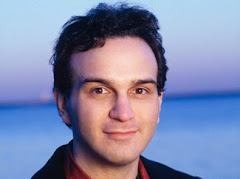One of my favourite conductors who comes regularly to conduct the MPO at the DFP in recent seasons is the distinguished Italian, Roberto Abbado. On previous visits, he had shown his mettle in the central core German, Italian and French repertoire. On this occasion, his concert with the MPO comprised youthful Russian works and Korngold's Violin Concerto.
Abbado opened the concert with a sprightly and transparent reading of Prokofiev’s sunny Classical Symphony in D major Op 25. Adopting a felicitous tempo, the opening Allegro achieved a light and airy texture which bristled with good humour and wit, whilst the central development section was suitably grand. Abbado encouraged real grace in the phrasing of the wonderful lyrical passages in the dreamy second movement (Larghetto) from the MPO violins, whose precision and golden timbre was remarkable.
There were minute ensemble imprecisions in the strings for the third movement Gavotte when Abbado chose to apply some slight touches of rubato at the onset. However, the flute solo from guest principal Dora Seres was stunning in beauty and delivery. Abbado led an excellent performance of the scampering Finale which was full of vibrant energy and good humour.
Korngold’s Violin Concerto in D major Op 35 followed the Prokofiev. Making his debut at the DFP, Ryu Goto chose to present Korngold's ultra-Romantic opus which was based on themes from four Hollywood hit movies and premiered in 1947 by Jascha Heifetz. It is natural to be reminded of Heifetz whenever encountering this concerto.
Goto brought his own special measure of artistry to the Korngold Violin Concerto. His was a lyrical performance that was also highly expressive in its own way. Adopting slightly slower tempi than usual, Goto coaxed sweet tones from his 1722 "Jupiter" Stradivarius to evoke the golden era of Hollywood film making during Korngold's time there from 1935 to 1956.
The opening theme of the concerto comes from the Evening Scene from the 1937 film Another Dawn. Goto played this soulfully and sang through Korngold's angular melodies. Abbado and Goto preferred to eschew the myriad changes of speed in this first movement with a slew of ritardandi and accelerandi not broadly heeded, particularly the latter. This resulted in a more somnolent account, with the faster passagework in the movement sounding a touch ponderous.
This quiescent approach from Goto and Abbado conjured up a wistful and mesmerizing atmosphere in the entrancing second movement (Romance), which is based on a theme from the 1936 Oscar-winning film score for Anthony Adverse. The third movement (Finale) based on a theme from the main motif from the 1937 film The Prince and the Pauper was particularly successful as Goto dived into the virtuosic perpetual motion passages with vigour and aplomb.
The second half of the concert combined fun and seriousness. The fun came via Kabalevsky's rarely-played Suite from The Comedians Op 27. I was glad that maestro Abbado introduced this modern tuneful trifle which was written specially for children to the Kuala Lumpur audience who have been generally nurtured with standard orchestral repertoire over the last 21 years.
Abbado adopted sprightly tempi for the opening two movements, the Prologue and Galop, whilst the slower movements like the Waltz and Gavotte were soulfully played. A heavy tread and ominous tone enveloped the Pantomime, whilst Abbado imparted the final Epilogue with an exuberant joyfulness.
Abbado's inspired choice of programming saw the early Shostakovich First Symphony Op 10 close this extremely colourful concert. Abbado drew out the frenetic and sardonic nature of the opening Allegretto - Allegro non troppo movement which had lots of impish contributions from the principal trumpet, bassoon and clarinet. In the second movement (Allegro), he encouraged the pianist Akiko Danis to draw out the comic capers and the forceful interjections, which was a reminder of the composer's earlier days of accompanying silent cinematic films.
Ample sweetly dissonant sounds in the oboe were heard in the slow movement (Lento), augmented by wistfully played violin, cello and oboe solos. The fourth movement finale, with its fanfare-like figures for brass, was technically strong, bringing Abbado and the MPO's performance to a very impressive conclusion.
Tuesday, 23 April 2019
A colourful Ryu Goto and Roberto Abbado concert
Subscribe to:
Post Comments (Atom)




















































No comments:
Post a Comment